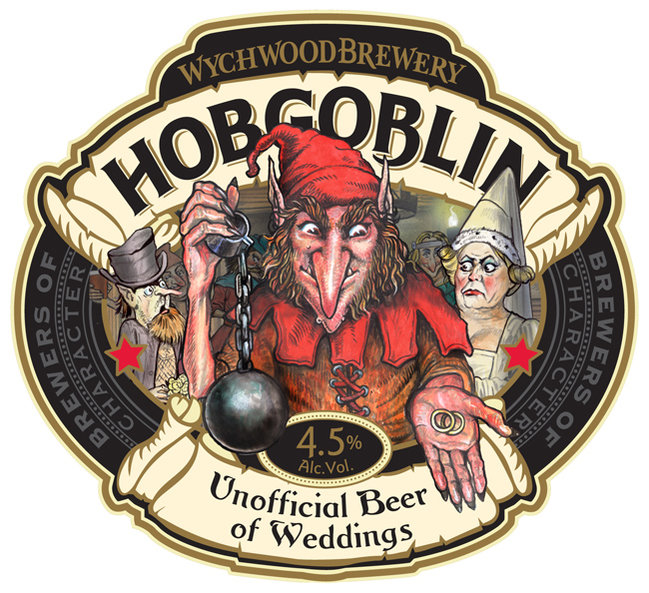Originally published in the Philadelphia Weekly, May. 30, 2012, but long since taken offline (though available on the Internet Archive). So here it is in full.
Drinking beer: It’s an act that transcends mere enjoyment, isn’t it? Throughout history, we’ve had an almost spiritual connection with our beer, one that leans toward the most fierce, primal part of who we are as human beings. Whereas wine is seen as civilized, refined, and at times erotic, beer conjures up something quite different—something wild, something untamed.
 In ancient days, triumphant warriors returned home from a day of plunder to down their ale while bragging of victory—intoxication swelling each boast into a bloated, fantastical account of deeds that defy human abilities. Small wonder, then, that so many modern beers are named for creatures and heroes out of myth and legend. Osiris Pale Ale. Storm King. Griffin’s Bow. From Egyptian gods to hidden beasts seen only in fleeting glimpses, we attach a level of EPIC to our brews that no other beverage can match. The idea of Odin’s Beard coffee or Serpent’s Tail orange juice would strike us as silly, but when it comes to beer, it just seems natural.
In ancient days, triumphant warriors returned home from a day of plunder to down their ale while bragging of victory—intoxication swelling each boast into a bloated, fantastical account of deeds that defy human abilities. Small wonder, then, that so many modern beers are named for creatures and heroes out of myth and legend. Osiris Pale Ale. Storm King. Griffin’s Bow. From Egyptian gods to hidden beasts seen only in fleeting glimpses, we attach a level of EPIC to our brews that no other beverage can match. The idea of Odin’s Beard coffee or Serpent’s Tail orange juice would strike us as silly, but when it comes to beer, it just seems natural.
Part of the reason is that beerlike beverages go back at least 9,000 years, predating recorded human history. In a sense, they have been with us for as long as there has been an “us.”
Archeological evidence in China shows that as far back at 7000 B.C., villagers used a variety of local ingredients to create fermented beverages that were distant ancestors of beer. A modern approximation of what that brew may have been like is Chateau Jiahua, brewed by Delaware’s kings of the off-centered, Dogfish Head. Brewed with brown rice, orange blossom honey, muscat grape, hawthorn berry, and, of course, barley, this heady concoction bears a closer resemblance to a floral champagne than beer. It’s unlikely Dogfish Head’s modern twist on that ancient recipe tastes anything like China’s ancient beverage—molecular analysis of pottery shards makes it possible to determine what ingredients were used, if not the specifics of how they were used—but it provides a window, at least, into brewing’s ancient past.
From the moment humankind began recording its history, it also began recording its love of beer. Some of the world’s earliest known writing extols the virtues of beer, most notably a 3,900-year-old Sumerian ode to Ninkasi, the matron goddess of beer. (Some of you might recognize the name from Eugene, Ore.’s Ninkasi Brewing Company.) The “Hymn to Ninkasi” is among the oldest known examples of written human language, and it is, in effect, instructions on how to brew beer.
Indeed, in ancient Sumer, brewing was no mere hobby for a few drunken brewmasters. Ancient records show that likely half the grain produced by Sumerians ended up in beer. The beverage played a part in their spiritual and religious rituals, and appears in the greatest myths of the age. In the Epic of Gilgamesh , for instance, the wild half-man Enkidu represents mankind before civilization. Before enlightenment. He was wild and untamed. It was not until Enkidu’s encounter with Ninkasi, during which he consumed seven pitchers of beer, that he set aside his wildness and became human.
This was just the first example of something over the ages seen time and again. From the beginning of recorded history, beer was often depicted as our connection to another world; to the world of mysticism, magic, and, of course, the gods.
Gods have frequently been attached to the consumption of beer. The Greek pantheon includes Silenus, the god of beer and a good friend of notable lush Dionysus. Beers honoring his name have been brewed by Canada’s Paddock Wood Brewing Co. and Portland, Ore.’s Migration Brewing Co. Osiris, meanwhile, wasn’t merely Ancient Egypt’s all-important god of agriculture, he was also the god of beer—doubly important, since workers in ancient Egypt were often paid in beer. (After you’ve honored Osiris with Sun King Brewing’s Osiris Pale Ale, have a taste of what the Egyptians used to drink with Dogfish Head’s Ta Henket, a recreation of that ancient style of ale.) The Zulu saw fit to honor the woman they believe created the first beer for human consumption, Mbaba Mwana Waresa, by naming her a god. Further north, the Norse god Aegir pulled double duty as god of the sea and god of beer and brewing.
And those are just a few examples. Without question, ancient people saw beer as something to be honored with godliness, often of a wild, untamed sort.
Beer has crept into our modern myths, too. The Kalevala , a sprawling epic of Finnish mythology that proved to be inspirational to J.R.R. Tolkien, author of The Lord of the Rings , doesn’t merely touch on beer, it devotes more time to beer than it does to the origins of man. And speaking of Tolkien, if Peter Jackson’s upcoming adaptation of The Hobbit is in keeping with Tolkien’s novel, it will certainly feature beer. In The Hobbit , Bilbo keeps barrels of beer in his cellar, serving some to the dwarves for breakfast. The dwarf Balin specifically asks Bilbo for beer, which the hobbit gladly supplies.
It should come as no surprise, then, that the gods of mythology make frequent appearances on our beer bottles. It’s probably cheating to cite Seattle’s Odin Brewing Company—they have beers named for Odin, Thor and Freya—so instead let’s pay a visit to Atlanta’s well-rated 5 Seasons Westside, a brewpub and eatery where Thor (in the guise of an imperial stout) spends time with the Sly Fox (a Belgian), Venus (a witbier), and modern-day myth Clark Kent (an English mild ale).
Yet more often it’s not the gods who grace our beer labels, but the creatures who gave them (and mankind) trouble.
American craft brewing offers up a veritable bestiary of mythological creatures. It would be difficult to find a creature not represented on a bottle or cask somewhere. Raging Centaur has romped in Michigan (a double IPA by HopCat brewing). Samuel Adams’ Griffin’s Bow, a big golden barleywine on shelves right now, is just one of several American beers that namedrop that creature of legend. Giants abound, with Pennsylvania’s own Victory Brewing boasting one of the best known examples with Storm King, a delicious imperial stout that can be cellared for up to five years. There are unicorns (Great Lakes Brewing), a pegasus or two (like the Pegasus IPA from Argus Brewery), multiple Krakens (including one from the aforementioned Ninkasi Brewing Co.), several sirens (Baltimore’s underrated Heavy Seas brews two), a few appearances of the three-headed dog Cerberus (Akron’s Thirsty Dog brews two that are available in better shops), a variety of goblins from England’s Wychwood Brewery (their Hobgoblin red ale is recommended), and far too many more to list.
Speaking of England, given the iconic nature of its unofficial fire-spewing mascot, it should come as no surprise that Jolly Ol’ boasts dozens of dragon beers, including a tip of the hat to St. George & The Dragon (Wadworth and Co.). America has some dragon beers of note, too. New Holland Brewing Co. out of Michigan brews a seasonal beer called Dragon’s Milk, a hefty 10 percent ABV stout aged in bourbon barrels. It’s light-bodied for a stout and, appropriately enough given its name, hot on the alcohol. Not for the faint of heart.
But then, what creature of myth is?
Sometimes, beer can be as dark and mysterious as the creatures that grace its labels. For hundreds of years, large, manlike beings have captured our imaginations but eluded our grasp. They’re known by different names depending on the region of the world in which they are seen—Yeti, Bigfoot, Sasquatch, and more—but the stories ring remarkably similar. Brooding. Dark. Hulking. Imposing yet suggesting a depth of complexity that makes them a closer cousin of humanity than the apes.
Fitting, then, that some of the most robust and complex beers on the market today are named after such creatures. Great Divide’s Yeti imperial stout series is among the most popular. The standard Yeti is a smoky, roasted beast of a stout, nuanced sweetness balanced by full bitterness and notes of coffee and chocolate. What makes the Yeti series especially exciting are the wildly varied alternate versions Great Divide produces. They brew one with espresso and age it in oak barrels. For another, they use Belgian yeast strains to give it an earthy, wild flavor. Yet another is infused with loads of chocolate. These beers manage to surprise you with their subtlety, something you wouldn’t expect from a brew that initially wallops you over the head with flavor.
Another of these near-man brews is Sierra Nevada’s acclaimed Bigfoot, the beer that invented the American barleywine style. When Bigfoot was first introduced in the late 1980s—promptly winning awards upon release—there really wasn’t anything like it on the American beer scene. First, it approached 10 percent alcohol by volume, something unheard of in the days when cheap lager was the only choice in town. Second, the barleywine style had all but disappeared in America. The first modern American barleywine was Anchor Brewing’s Old Foghorn, introduced in 1975. That beer was closer in spirit to its English cousins than the Americanized version Sierra would later brew—a backbone of fat, sweet malts can barely contain the copious hopping of Bigfoot, making it far more bitter than its English cousins—but few other brewers dared try their hand at this imposing style. And lastly, unlike the vast majority of American beers, this was a brew you could put in the cellar and age for five or 10 years, sometimes longer. The very notion must have seemed preposterous to many, but today Bigfoot is one of the most frequently aged beers on the shelves. Bottles of 5 or 6 years old are a delight to be savored.
Sometimes, our beer-fueled homages to the world of myth and legend take a decidedly biblical turn. Boulder, Co.’s Avery Brewing Company is widely hailed as one of the nation’s best, and they take their mythology very seriously. Their names tend toward the religious side of things, delving into entities far darker than a hairy man in the woods. For example, their Demons of Ale series features three of the biggest, most potent, most intimidating beers on shelves today. The best known is Mephistopheles’ Stout, a monstrous black brew that comes in at nearly 15.1 percent ABV. It’s an imposing concoction that probably comes across like Hell in a bottle to the uninitiated. Samael’s Ale is an English-style barleywine swelled to grotesque proportions. It is generally brewed to between 14 and 15 percent, enough booze to knock down a grown man. And then we have The Beast, a Belgian strong dark ale that nears 15 percent and is as beastly as the name implies.
Whether god, monster or mortal, we have tendency to connect great figures of the past with great beers, almost as if by virtue of their deeds we can make our beverages better. Or is it really the reverse? Maybe what we’re really doing is elevating these historical figures, fictional or otherwise, by attaching them to a beverage so near to our hearts. When Philly’s own Yards Brewing creates beers that follow in the footsteps of the Founding Fathers with their Ales of the Revolution series, or Jim Koch names his entire line of beers after Founder Samuel Adams, they are not merely lending their beers a sense of history, and by extension lending it credibility. In a strange way, they’re also etching those historical figures into our great myths—by attaching them to history’s most significant beverage.






